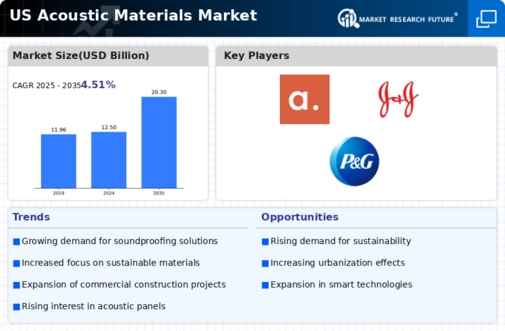The US Acoustic Materials Market is characterized by dynamic competition among various manufacturers who focus on providing innovative solutions aimed at sound absorption and noise reduction across several applications. This market is influenced by growing awareness of the importance of acoustic quality in commercial and residential spaces, pushing companies to develop advanced materials that enhance auditory environments. Factors such as technological advancements, product diversification, and strategic partnerships are essential in determining market positioning and driving growth in this sector.
As the demand for effective acoustic materials rises, companies are also focusing on sustainability to meet changing regulatory standards and consumer preferences, which further complicates the competitive landscape.CertainTeed has established a formidable presence within the US Acoustic Materials Market, leveraging its extensive experience in manufacturing cutting-edge products that enhance indoor acoustics. The company's strength lies in its wide range of offerings that cater to various industry segments, including commercial buildings, residential structures, and industrial applications. This broad product portfolio enables CertainTeed to address diverse acoustic needs while maintaining a strong focus on quality and performance.
The company is also recognized for its commitment to sustainability, continually developing eco-friendly materials that align with industry trends and regulatory requirements. This capacity to innovate and adapt places CertainTeed in a competitive position in the US market, allowing it to cater effectively to evolving customer demands.BASF has carved a significant niche in the US Acoustic Materials Market by focusing on delivering high-performance products designed for sound management in various environments. The company offers a range of acoustic solutions, including sound-absorbing panels and insulation materials, catering primarily to construction, automotive, and various industrial sectors.
BASF's strength is its commitment to research and development, which facilitates the creation of innovative products that not only meet acoustic requirements but also enhance sustainability. The company has engaged in strategic mergers and acquisitions to bolster its market presence and broaden its product range, allowing it to remain competitive in a rapidly evolving industry. This proactive approach ensures that BASF is well-positioned to capitalize on future growth opportunities within the US acoustic materials sector while responding effectively to changing consumer preferences and industry standards.














Leave a Comment